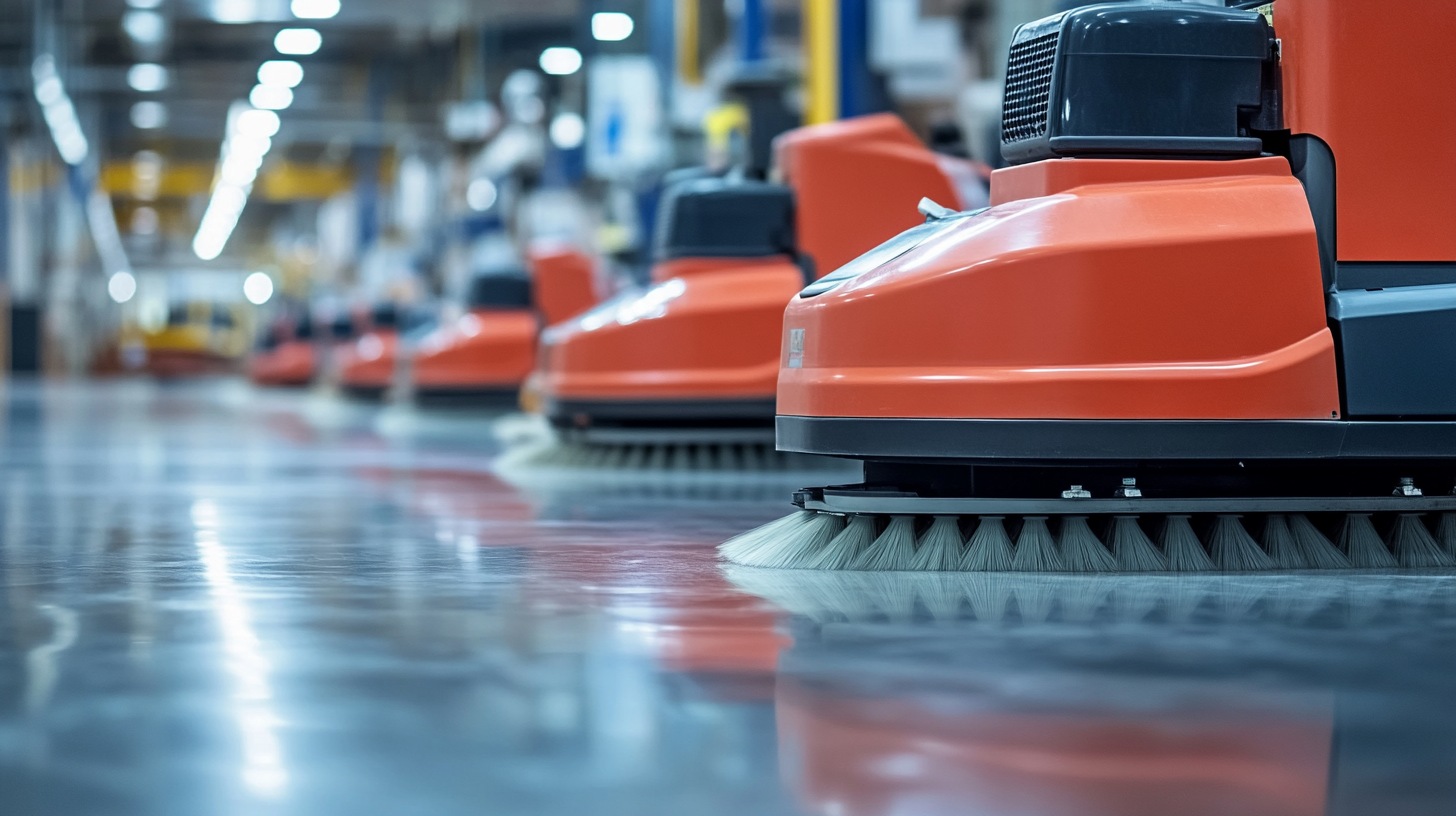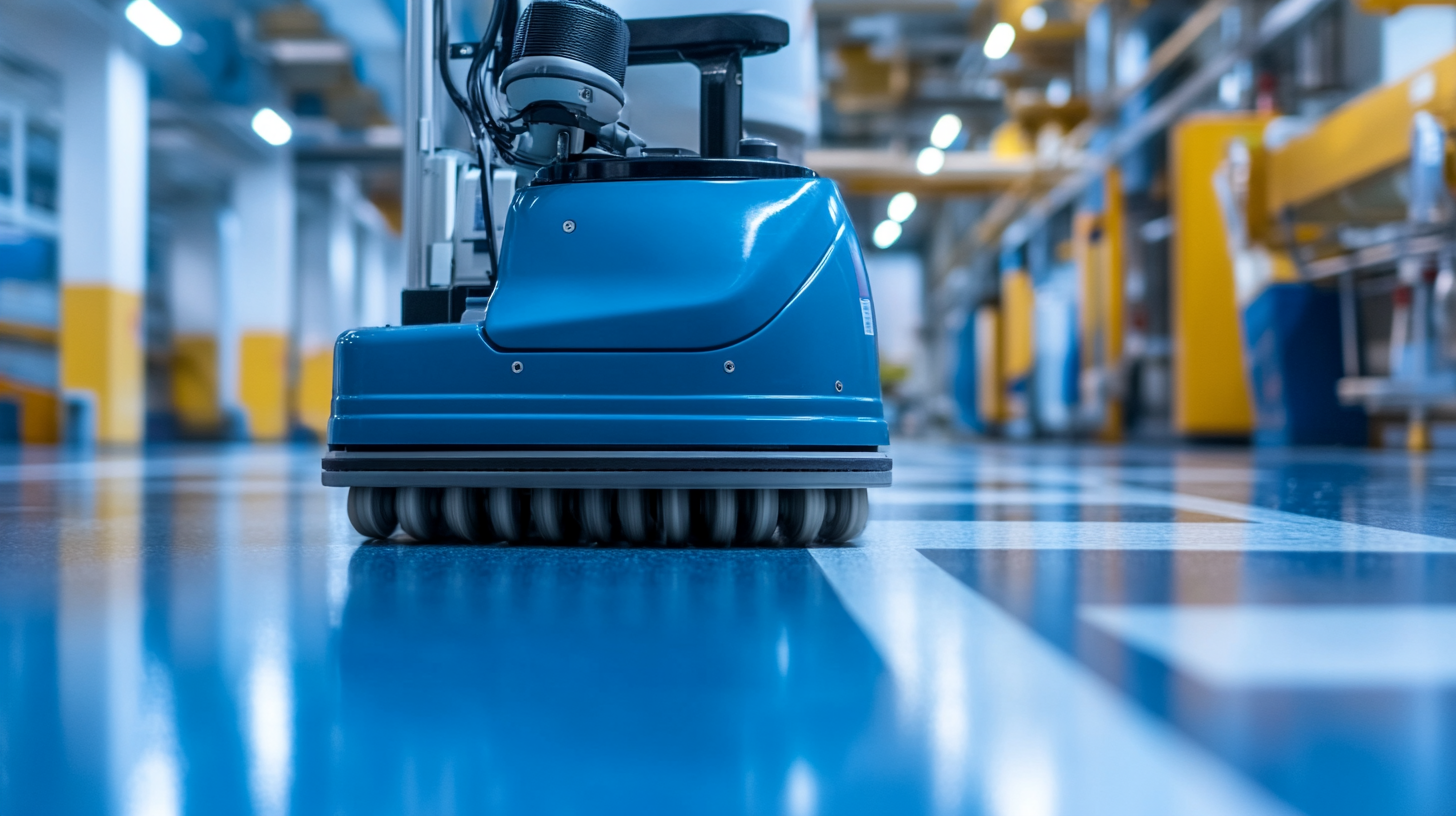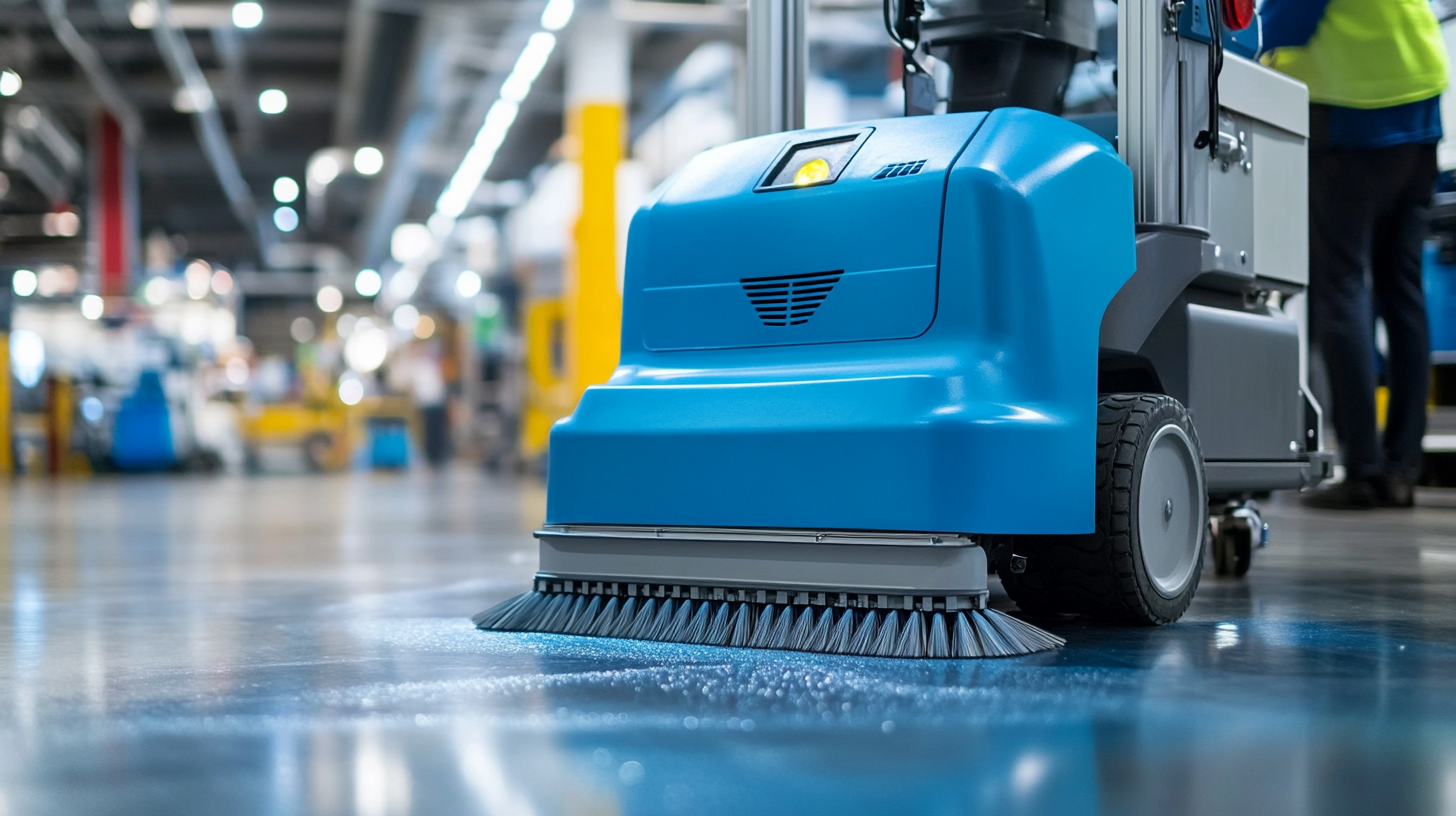Leave Your Message
The global floor scrubber machine market is poised for remarkable growth, with projections indicating a substantial increase in demand across various sectors. According to a recent market research report, the floor scrubber machine cleaning machine segment is expected to witness a CAGR of over 5% from 2025 to 2030. This growth can be attributed to the rising emphasis on maintaining cleanliness and hygiene in commercial and industrial environments, particularly in the wake of the COVID-19 pandemic. Businesses are increasingly investing in advanced cleaning technologies to enhance operational efficiency and ensure a safe working environment for employees and clients alike.
Moreover, the integration of innovative features such as automation and IoT capabilities in floor scrubber machines further enhances their appeal. As organizations prioritize sustainability and eco-friendly practices, the demand for machines that utilize less water and biodegradable detergents is also surging. Research indicates that the market for floor scrubber machine cleaning machines will continue to evolve, driven by technological advancements and changing consumer preferences. As we delve into the insights for 2025 and beyond, it is essential to explore the trends shaping this sector and the potential for growth in various applications across the globe.

The floor scrubber machine market is poised for transformative trends that will shape its landscape well into 2025 and beyond. One of the most significant developments is the increasing integration of smart technologies. With the rise of the Internet of Things (IoT), floor scrubbers are becoming smarter, enabling real-time monitoring and data analysis. These advancements facilitate predictive maintenance, optimizing machine performance while reducing downtime. As businesses seek efficiency and cost-effectiveness, the demand for machines equipped with advanced connectivity features will surge. Another key trend is the growing emphasis on sustainability and environmental consciousness. Manufacturers are prioritizing the development of eco-friendly floor scrubber machines that utilize greener cleaning solutions and energy-efficient designs. This shift not only helps companies meet regulatory demands but also aligns with the values of environmentally aware consumers. Thus, incorporating sustainable practices into the design and operation of these machines will be crucial for brands aiming to stay competitive in a rapidly evolving market. Lastly, the focus on ergonomics and user-friendly designs is expected to shape future floor scrubbers. As the workforce becomes increasingly diverse, the importance of comfort and ease of use cannot be overstated. Innovations like lightweight materials and intuitive controls will enhance operator experience, reducing fatigue and improving productivity. This user-centric approach will not only benefit employees but also lead to better overall outcomes for businesses, making ergonomics a vital consideration in the design of future floor scrubber machines.

The floor scrubber industry is on the brink of a transformative era, driven largely by technological innovations that enhance efficiency and performance. With the global floor cleaning equipment market projected to soar to USD 397.2 billion by 2032, the adoption of advanced technologies such as AI, sensors, and GPS is set to revolutionize the way we approach cleaning tasks. This evolution is not merely a trend; it signifies a substantial shift towards automation and smarter cleaning solutions.
At CES 2025, several companies are unveiling groundbreaking innovations aimed at redefining home and industrial cleaning. The integration of smart technologies into floor scrubbers, especially autonomous systems employing advanced lidar technologies, promises to optimize cleaning procedures while reducing human intervention. These intelligent solutions not only increase efficiency but also ensure high performance across various cleaning scenarios, making them indispensable in both commercial and residential settings.
The anticipated growth of the robotic floor scrubber market further underscores the demand for innovative solutions. With an expected CAGR of 13.26% from 2022 to 2028, innovations in design and functionality are addressing consumers' growing need for effective cleaning without the physical strain. As urbanization continues to rise, the importance of maintaining cleanliness in densely populated areas becomes paramount, driving the search for ever-more sophisticated cleaning technologies. The forthcoming years will likely see even greater advancements, cementing the role of technology in enhancing floor scrubber machines.

The global floor scrubber market is poised for significant growth as industries increasingly recognize the importance of maintaining clean and safe environments. Key sectors driving the demand for floor scrubbers include healthcare, retail, and hospitality. A recent analysis suggests that the market for floor scrubber machines will reach impressive valuations by 2025, largely fueled by advancements in technology and a growing emphasis on sustainability in cleaning practices.
In particular, the healthcare sector is expected to be a leading contributor to this growth. With heightened awareness around hygiene due to recent global health crises, the need for effective cleaning solutions has soared. According to industry reports, the floor scrubber market is projected to grow substantially as organizations invest in equipment that meets rigorous sanitation standards. This presents a promising landscape for manufacturers and suppliers of cleaning equipment.
Furthermore, with the ongoing evolution of automation and smart technologies in cleaning machines, the floor scrubber segment is likely to experience an influx of innovative products. Companies are increasingly focusing on developing eco-friendly options that not only enhance cleaning efficiency but also align with environmental sustainability goals. This trend is pivotal as more businesses seek to reduce their carbon footprints, making the floor scrubber market a dynamic and lucrative area for both established and emerging players alike.

As we look toward 2025, the floor scrubber machine industry is undergoing a significant transformation driven by sustainability and eco-friendly practices. The growing demand for cleaner and greener technologies is pushing manufacturers to innovate solutions that minimize their environmental impact. According to a recent report by McKinsey, consumers are increasingly prioritizing sustainability in their purchasing decisions, with products claiming eco-friendliness experiencing notable sales growth. This trend is compelling floor scrubber manufacturers to adopt sustainable materials and practices in their production processes.
Incorporating green technologies is not just a trend but a necessity for manufacturers aiming to remain competitive in the market. The green cleaning movement is now embracing advanced technologies that enhance cleaning efficiency while reducing harmful emissions. This is evident in the rising adoption of electric and battery-powered floor scrubbers, which produce zero emissions compared to their traditional gasoline-powered counterparts. Additionally, the integration of non-toxic cleaning agents is becoming standard practice, aligning with consumer preferences for safe and sustainable cleaning options.
Furthermore, a joint study by NielsenIQ highlights that consumers are not just aware of sustainability—they are backing it up with their wallets. Companies that prioritize eco-friendly features in their products are likely to see increased customer loyalty and sales. Therefore, it is vital for floor scrubber manufacturers to navigate this landscape by investing in sustainable practices that resonate with environmentally conscious consumers. As the industry evolves, the focus on sustainability will not only enhance brand reputation but also contribute positively to the planet's future.
The competitive landscape of the floor scrubber machines market is evolving rapidly as major players and emerging startups seek to innovate and capture market share. Leading companies in the industry are harnessing advanced technologies to enhance the efficiency and functionality of their products. Notable players such as Tennant, Nilfisk, and Kärcher are not only focusing on traditional machine designs but are also exploring smart technology integrations, increasing automation, and eco-friendly solutions.
At the same time, a wave of startups is disrupting the market by introducing novel business models and products that cater to specific customer needs. These emerging companies are leveraging the latest advancements in robotics and artificial intelligence to create floor scrubbers that offer superior performance and reduced operational costs. The rise of such innovation-driven enterprises underscores the importance of adaptability in an environment where consumer demands are evolving towards sustainability and efficiency.
Additionally, the intersection of technology and traditional cleaning solutions is becoming a focal point. Startups are also collaborating with tech firms to combine cleaning hardware with software for real-time monitoring, predictive maintenance, and enhanced user experience. As competition intensifies, the ongoing developments in product features and functionalities not only propel the floor scrubber market forward but also set the stage for a vibrant and diverse ecosystem where innovation thrives.
